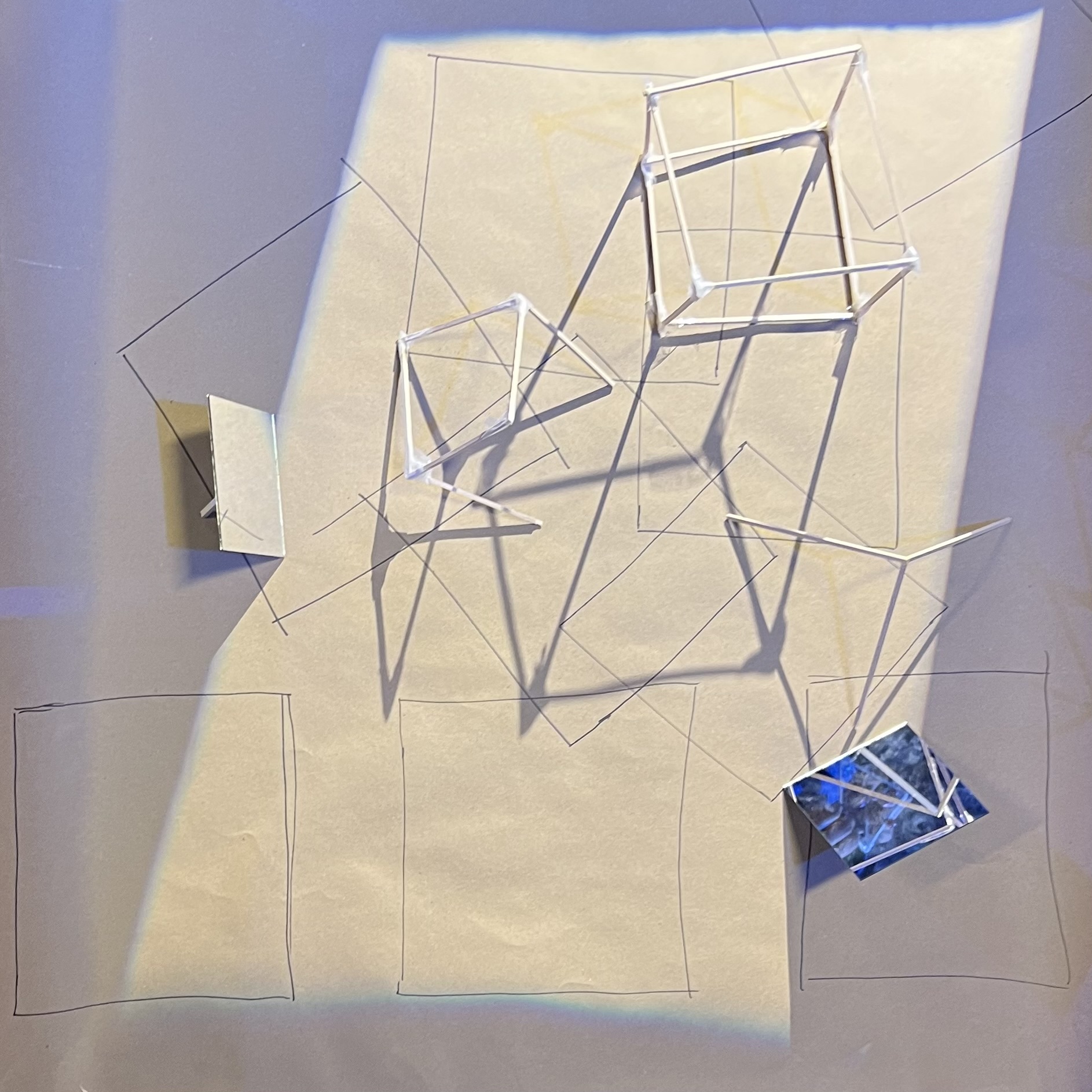Architecture and light︎︎︎
A pattern based workshop unfurls the creators as they alternate between experimentation of process and the exploration of rule based composition logic. Created using paper, sketch pens, wooden craft dowels, mirror and small lights, the changing angle of lights show shapes, colours, and shadows through movement, transformation, shifting perception and explores the spatial potential of surface interpretation.
This practice revolves around 9 squares drawn on paper, the squares may or may not merge into one another or transverse with one another linearly.
Placing the priority on the formal elements of line, shape, space and form, use square craft dowels to create square or rectangular frames, and overlap the frames on the line marked on paper.
The asymmetrical arrangements should onset sculptural variations of the drawn squares by experimenting myriad of possibilities, permutations of three-dimensional compositions of geometric patterns.
Use natural or artificial light source, to deconstruct the way you observe the composition. The shadows creates various facets and possibilities that can be offered within a four sided shape, that can be dissected, divided - creating uniques shapes and forms.
Use a small square mirror to create repetitive forms. Reflect the light and shadow, playing on the drawing sheets or project shadows on wall - and experience the shapes merging and shifting with light.
Throughout the process, take photographs and work back-froth, to improvise the compositions with architectural vocabulary such as additive and subtractive, or strip down to lines, solid and void, etc.
Play and improvise with the compositions, and develop layers, both in the work itself, as well as in the process of its creation. Enjoy the double take, have a third glance, adding complex medium such as artificial light or digital projections, and changing the light source direction, accentuates the visual phenomena.
In this play, a new perspective is created, the spatial potential of surface interplay allows for a new perception to become possible. The aim is to reveal something more complex, drawing attention to the ways that we construct our surrounding by looking at it.
![]()
This practice revolves around 9 squares drawn on paper, the squares may or may not merge into one another or transverse with one another linearly.
Placing the priority on the formal elements of line, shape, space and form, use square craft dowels to create square or rectangular frames, and overlap the frames on the line marked on paper.
The asymmetrical arrangements should onset sculptural variations of the drawn squares by experimenting myriad of possibilities, permutations of three-dimensional compositions of geometric patterns.
Use natural or artificial light source, to deconstruct the way you observe the composition. The shadows creates various facets and possibilities that can be offered within a four sided shape, that can be dissected, divided - creating uniques shapes and forms.
Use a small square mirror to create repetitive forms. Reflect the light and shadow, playing on the drawing sheets or project shadows on wall - and experience the shapes merging and shifting with light.
Throughout the process, take photographs and work back-froth, to improvise the compositions with architectural vocabulary such as additive and subtractive, or strip down to lines, solid and void, etc.
Play and improvise with the compositions, and develop layers, both in the work itself, as well as in the process of its creation. Enjoy the double take, have a third glance, adding complex medium such as artificial light or digital projections, and changing the light source direction, accentuates the visual phenomena.
In this play, a new perspective is created, the spatial potential of surface interplay allows for a new perception to become possible. The aim is to reveal something more complex, drawing attention to the ways that we construct our surrounding by looking at it.

︎︎︎from Mansi Patel






